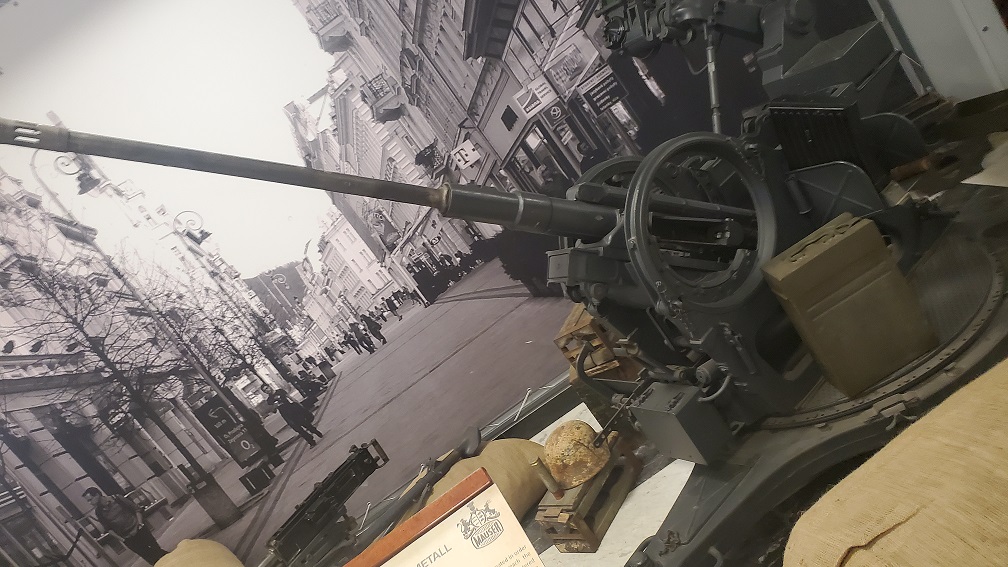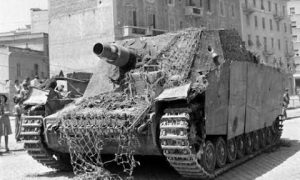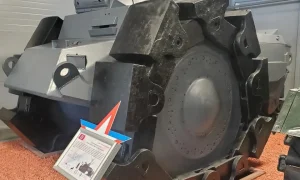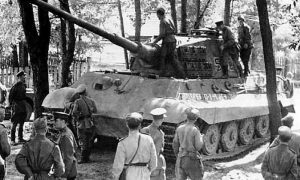2-cm FlaK 30 History of Development
2.0 cm FlaK 30/38 (German 2.0 cm Flugzeugabwehrkanone 30/38 – 2-cm anti-aircraft gun model 1930/1938 ) – German 20-mm automatic anti-aircraft guns, developed by Rheinmetall / Mauser, respectively.
The 2 cm FlaK 30 automatic anti – aircraft cannon was developed by Rheinmetall in 1930, and the Wehrmacht began to receive guns in 1934. The first combat test took place during the Spanish Civil War – as part of the anti-aircraft unit F/88 of the German Legion “Condor”, where they showed themselves positively due to their relatively low weight, simplicity of the device, and the ability to quickly disassemble and assemble.
Before the start of World War II, at the beginning of 1939, each Wehrmacht infantry division in the state relied on 12 20-mm FlaK 30 or FlaK 38 anti-aircraft guns.
During World War II, 2 cm FlaK 30 were used as anti-aircraft guns and for firing at ground targets (including to destroy lightly armored vehicles: light tanks, tankettes, armored personnel carriers, armored vehicles, etc.) To do this, in addition to a cartridge with a caliber armor-piercing projectile Pz GR 39 (cartridge mass 0.33 kg, V 0 = 830 m/s), the gun ammunition contained a cartridge with an armor-piercing sub-caliber projectile (BPS) Pz GR 40.
Also, by the time the company began in France, the Flak 30 anti-aircraft guns already had 6mm thick prefabricated armor shields to protect against the calculation of the gun from enemy small arms. The shield was assembled from many elements with the help of lamb nuts and rivets, and was attached to the base of the gun. The shield for the barrel (KCH) and the gunner were separate and installed separately from the main armor shield.
During the war in the Balkans in the spring of 1941, German troops began to install 20-mm Flak 30/38 anti-aircraft guns in the body of Sd.Kfz.10 / 4 half-tracks (the gun was not removed from the wheeled carriage, but mounted on the platform together with the carriage).
The guns were used until the end of World War II.
Thanks to their good performance characteristics, the 2 cm FlaK 38 anti-aircraft guns gave rise to many modifications for the infantry, mountain, motorized and tank units of the Wehrmacht and the SS troops, with installation on standard and lightweight carriages or ZSU, in single-barreled, twin or quad versions… Pedestal FlaK 30 and FlaK 38 20mm anti-aircraft guns were installed on ships and submarines of the German Navy.
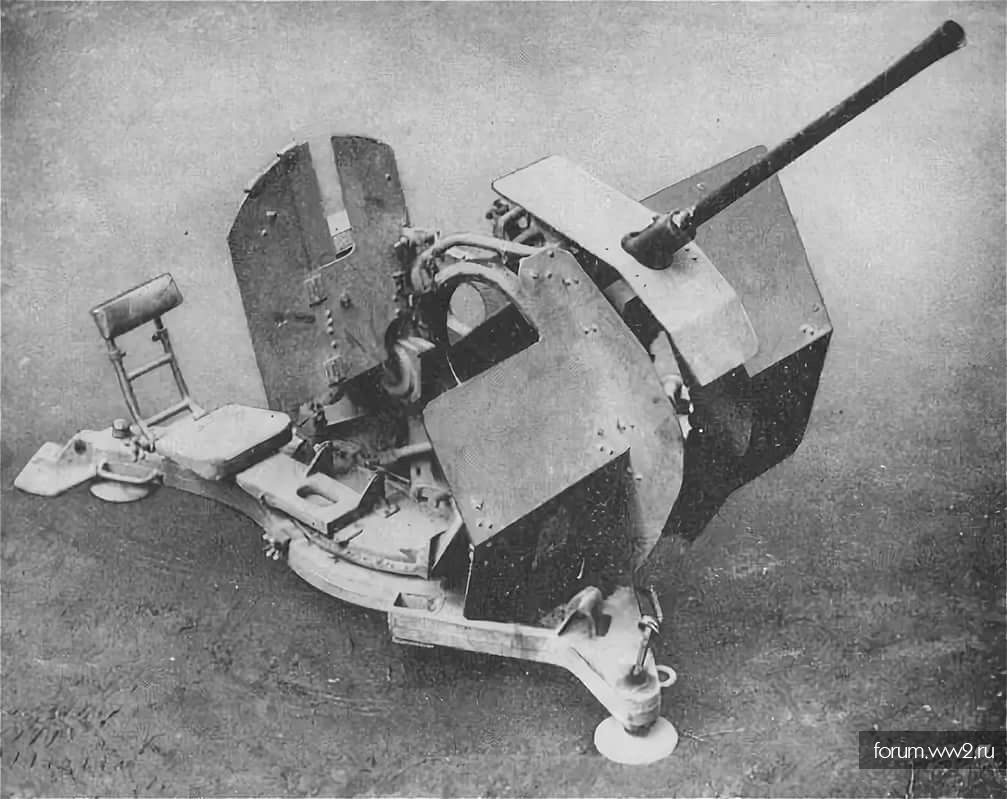
Flak 30 Description
The anti-aircraft gun was equipped with a mechanical computational sight.
The installation was equipped with a recoil device and magazine feed of ammunition. During transportation, the gun was placed on a two-wheeled trailer and secured with two brackets and a connecting pin. It took only a few seconds to remove the pin, after which the clamps loosened, and the system, along with the gun carriage, could be lowered to the ground.
In 1938, based on the results of combat use in Spain, the Mauser company modernized the 2 cm FlaK 30 – the modernized model received the designation 2 cm FlaK 38 and was adopted by the German army.
The new installation had the same ballistics and ammunition, both guns were installed on the same type of light wheeled carriages, providing circular fire in a combat position with a maximum elevation angle of 90°. Changes in the carriages were minimal – in particular, for the 2 cm FlaK 38, a second speed was introduced in manual guidance drives. Basically, all the changes in the modernized gun were aimed at increasing the rate of fire, which increased from 240-280 rds / min. up to 420-480 rounds / min. The principle of operation of the mechanisms of the FlaK 38 assault rifle remains the same – the use of recoil force with a short barrel stroke… The increase in the rate of fire was achieved by reducing the weight of the moving parts and increasing their speeds, in connection with which special buffers were introduced – shock absorbers. In addition, the introduction of a copy space accelerator made it possible to combine the opening of the shutter with the transfer of kinetic energy to it.
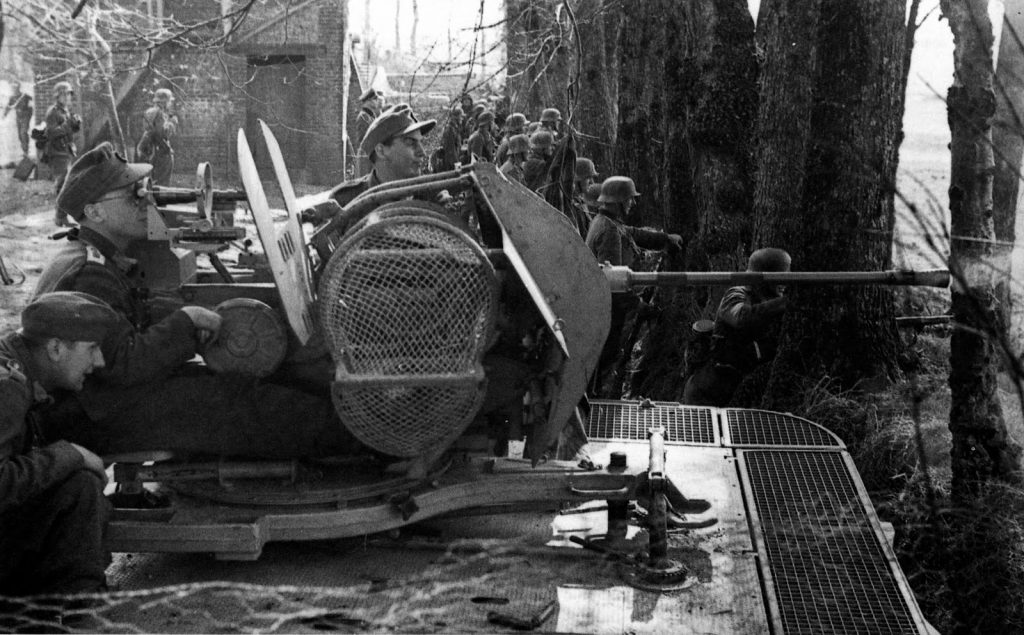
Variants and modifications
2 cm FlaK 30
- 2 cm FlaK 30 – a towed anti-aircraft gun on a wheeled carriage for ground forces;
- 2 cm FlaK C / 30 – vehicular anti-aircraft gun on a pedestal-carriage C/35
- 2 cm KwK 30 – tank automatic cannon. It had a modified barrel (thickened almost along its entire length and reduced the length by 5 calibers) and many minor changes in the device of the gun body, mainly associated with the peculiarities of using the gun inside tanks and armored vehicles. For use in armored vehicles, a special reduced magazine for 10 shots was developed, instead of the standard one for 20.
- G-Wagen I (E) leichte FlaK -anti-aircraft gun on a railway platform. Production began in 1941, later two standardized versions were developed: G-Wagen I (E) leichte FlaKand G-Wagen II (E) leichte FlaK. They were used as part of armored trains, as well as mobile anti – aircraft batteries.
2 cm FlaK 38
- 2 cm FlaK 38 – a towed anti-aircraft gun on a wheeled carriage for ground forces;
- 2 cm Gebirgs-FlaK 38 – anti-aircraft gun for mountain units on a lightweight carriage,
- 2 cm FlaK C / 38 anti aircraft gun;
- 2 cm FlaK-Zwilling 38 – shipborne twin anti-aircraft gun mount;
- 2 cm FlaK-Vierling 38 -quad universal anti-aircraft gun;
- 2 cm FlaK 38 on the Sd.Kfz chassis. 251 – a number of these vehicles were built on the chassis of convertedSd.Kfz. 251,they were used in 1942-1944. in the Wehrmacht and Luftwaffe on the Eastern Front and in the occupied territory of the USSR. They were not officially adopted for service and therefore did not have an official name;
- Sd.Kfz. 251/17 – self-propelled anti-aircraft installation on the chassis of theSd.Kfz. 251 Ausf. D,in which the 20mmFlak 38 anti-aircraft gun isinstalled in the troop compartment. Production and combat use continued in 1944-1945.
- Flakpanzer 38 (t) -self-propelled anti-aircraft weapon on a tank chassis Pz.Kpfw.38 (t)
- Flakpanzer IV “Wirbelwind” – a quadruple self-propelled anti-aircraft gun on the chassis of thePzKpfw IV tank
- G-Wagen II (E) leichte FlaK – anti-aircraft gun on a railway platform. They were used as part of armored trains, as well as mobile anti – aircraft batteries.
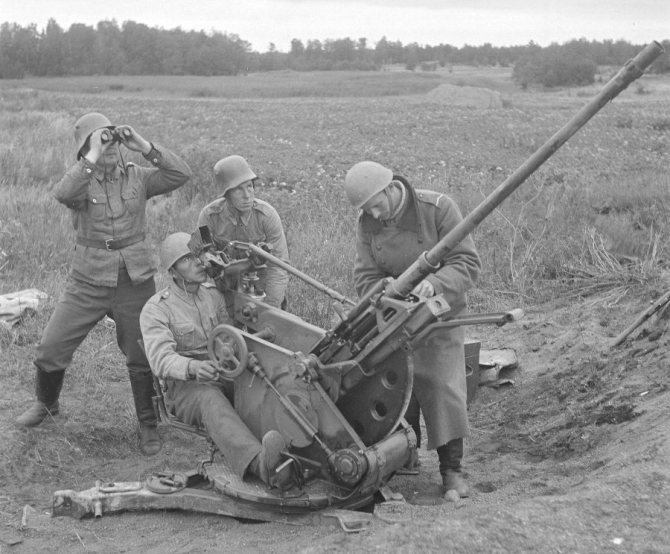
Operating countries
- Nazi Germany – adopted by the Luftwaffe and began to enter service in 1934, later used throughout the Wehrmacht : ground forces, Luftwaffe and Kriegsmarine ;
- Bulgaria – in 1939, the guns began to enter service with the Bulgarian army, they were used under the name Flak 30 “Rheinmetal” M 1934. After Bulgaria went over to the side of the Anti-Hitler coalition, the guns were adopted by the Bulgarian People’s Army and were used in the hostilities of 1944-1945. against German troops;
- Finland – in 1939-1943, 163 guns were supplied from Germany for the Finnish army, they were used under the designation 20 ItK / 30 and 20 ItK / 38;
- Lithuania – in 1939,150 pcs. purchased in Germany, used by the Lithuanian armed forcesunder the designation 20 mm LAP ;
- Italy – in 1940, the guns began to enter service with the Italian troops, were used under the name 20/65 Mod. 30/38
In addition, Rheinmetall exported these guns in fairly large quantities to Holland and China.


